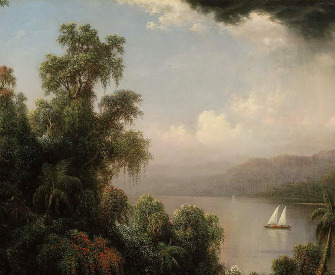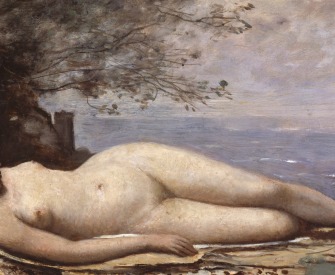The phosphorescence of the ocean is one of those splendid phenomena of nature that excite our admiration, even when we behold its recurrence every night for months together. The ocean is phosphorescent in all zones of the earth, but he who has not witnessed the phenomenon in the tropics, and especially in the Pacific, can form but a very imperfect idea of the majesty of this brilliant spectacle. The traveler aboard a man-of-war, when plowing the foaming waves before a fresh breeze, feels that he can scarcely satisfy himself with gazing on the spectacle presented by the circling waves. Wherever the ship’s side rises above the waves, bluish or reddish flames seem to flash lightning-like upward from the keel. The appearance presented in the tropical seas on a dark night is indescribably glorious when shoals of dolphins are seen sporting around and cutting the foaming waves in long and circling lines, gleaming with bright and sparkling light. In the Gulf of Cariaco, I have spent hours enjoying this spectacle.
From Views of Nature. As a young man, Humboldt met Johann Wolfgang von Goethe, with whom he conducted a series of experiments on frogs. Humboldt continued his research and later studied the corpses of a local farmer and his wife who had been struck by lightning, in order to understand the effects of electric shocks on muscles. While he was crossing the Atlantic en route to South America, a fever broke out on his ship; Humboldt abandoned his plan to visit Cuba and disembarked in Venezuela, where he hunted and dissected electric eels.
There are probably few subjects of natural investigation that have excited so many and such long-continued contentions as the phosphorescence of seawater. All that is known with certainty regarding this much-disputed question may be reduced to the following simple facts. There are many luminous Mollusca that possess the property when alive of emitting at will a faint phosphoric light. The luminosity of seawater is in part owing to living, light-bearing animals and in part to the organic fibers and membranes of the same when in a state of decomposition.
Among the small Acalepha (sea nettles), the Mammaria scintillans presents us, as it were, with the glorious image of the starry firmament reflected in the surface of the sea. When full-grown this little creature scarcely equals in size the head of a pin. My distinguished friend and fellow traveler in Siberia, Ehrenberg, succeeded in keeping two luminous Infusoria of the Baltic alive for nearly two months at Berlin. I examined them with him in 1832 and saw them coruscate in a drop of seawater on the darkened field of the microscope. When these luminous Infusoria (the largest of which was only one-eighth and the smallest one forty-eighth to one ninety-sixth of a Parisian line in length) were exhausted and ceased to emit sparks, they would renew their flashing on being stimulated by the addition of acids or by the application of a little alcohol to the seawater.
By repeatedly filtering fresh seawater, Ehrenberg succeeded in procuring a fluid in which a large number of these light-emitting animalcules were accumulated. This acute observer has found in the organs of the Photocharis, which give off flashes of light (either voluntarily or when stimulated), a cellular structure of a gelatinous character in the interior that manifests some similarity with the electric organ of the Gymnotus and the Torpedo.
The luminous animals of the ocean appear, from these conjectures, to prove the existence of a magnetoelectric light-generating vital process in other classes of animals besides fishes, insects, Mollusca, and Acalepha. Is the secretion of the luminous fluid that is effused in some animalcules and that continues to shine for a long period without further influence of the living organism merely the consequence of the first electric discharge, or is it simply dependent on chemical composition? The luminosity of insects surrounded by air assuredly depends on physiological causes different from those that give rise to a luminous condition in aquatic animals, fishes, medusae, and Infusoria. The small Infusoria of the ocean, being surrounded by strata of salt water, which constitutes a powerful conducting medium, must be capable of an enormous electric tension of their flashing organs to enable them to shine so vividly in the water.
Sometimes one cannot, even with high magnifying powers, discover any animalcules in the luminous water; and yet, wherever a wave breaks in foam against a hard body and, indeed, wherever water is violently agitated, flashes of light become visible. The cause of this phenomenon depends probably on the decomposing fibers of dead Mollusca, which are diffused in the greatest abundance throughout the water. If this luminous water is filtered through finely woven cloths, the fibers and membranes appear like separate luminous points. When we bathed at Cumaná, in the Gulf of Cariaco, and walked naked on the solitary beach in the beautiful evening air, parts of our bodies remained luminous from the bright fibers and organic membranes that adhered to the skin, and they did not lose this light for some minutes.
Back to Issue





